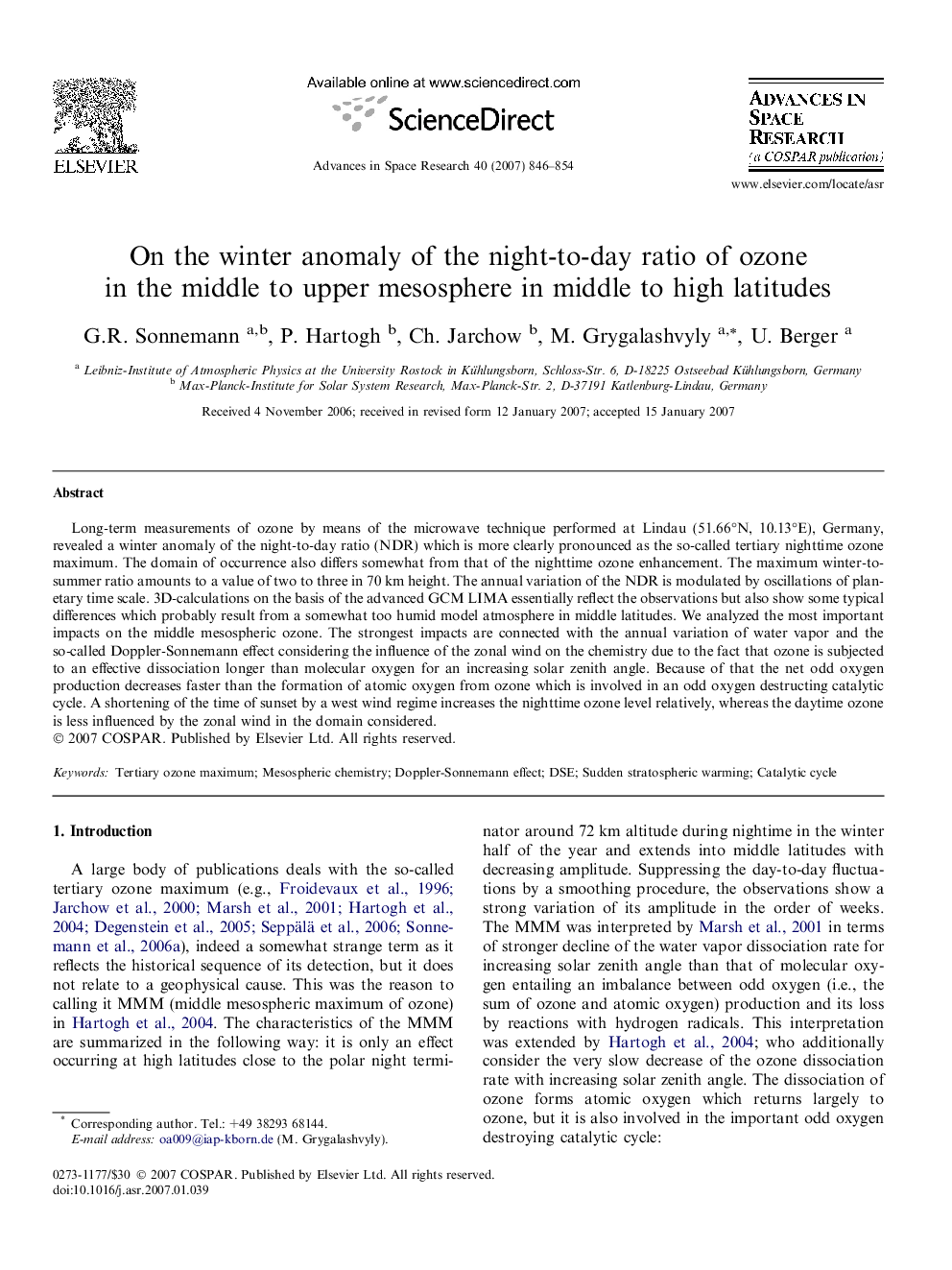| Article ID | Journal | Published Year | Pages | File Type |
|---|---|---|---|---|
| 1768883 | Advances in Space Research | 2007 | 9 Pages |
Long-term measurements of ozone by means of the microwave technique performed at Lindau (51.66°N, 10.13°E), Germany, revealed a winter anomaly of the night-to-day ratio (NDR) which is more clearly pronounced as the so-called tertiary nighttime ozone maximum. The domain of occurrence also differs somewhat from that of the nighttime ozone enhancement. The maximum winter-to-summer ratio amounts to a value of two to three in 70 km height. The annual variation of the NDR is modulated by oscillations of planetary time scale. 3D-calculations on the basis of the advanced GCM LIMA essentially reflect the observations but also show some typical differences which probably result from a somewhat too humid model atmosphere in middle latitudes. We analyzed the most important impacts on the middle mesospheric ozone. The strongest impacts are connected with the annual variation of water vapor and the so-called Doppler-Sonnemann effect considering the influence of the zonal wind on the chemistry due to the fact that ozone is subjected to an effective dissociation longer than molecular oxygen for an increasing solar zenith angle. Because of that the net odd oxygen production decreases faster than the formation of atomic oxygen from ozone which is involved in an odd oxygen destructing catalytic cycle. A shortening of the time of sunset by a west wind regime increases the nighttime ozone level relatively, whereas the daytime ozone is less influenced by the zonal wind in the domain considered.
